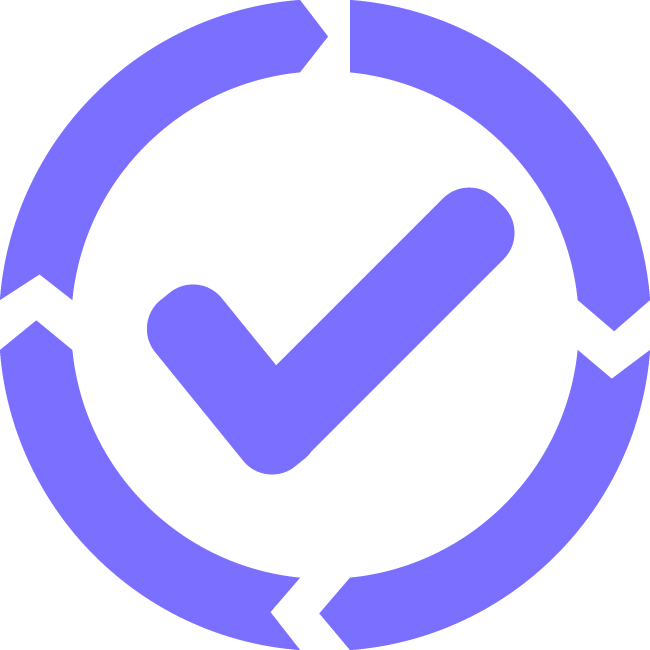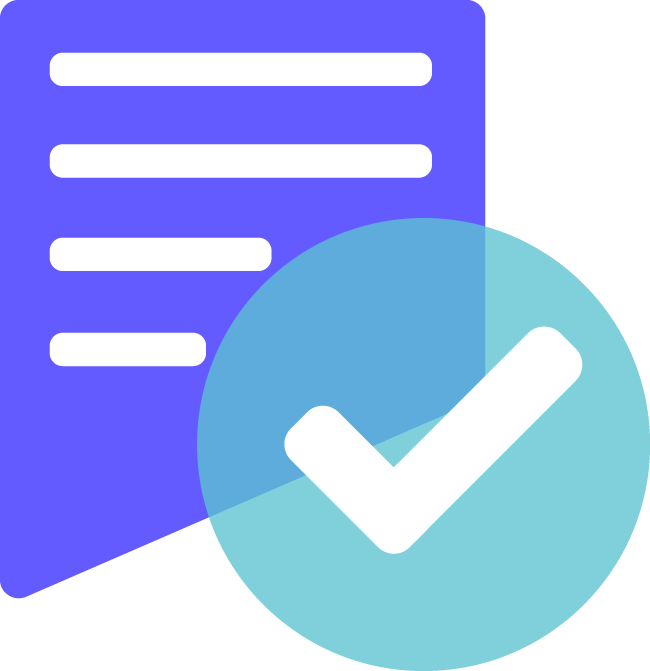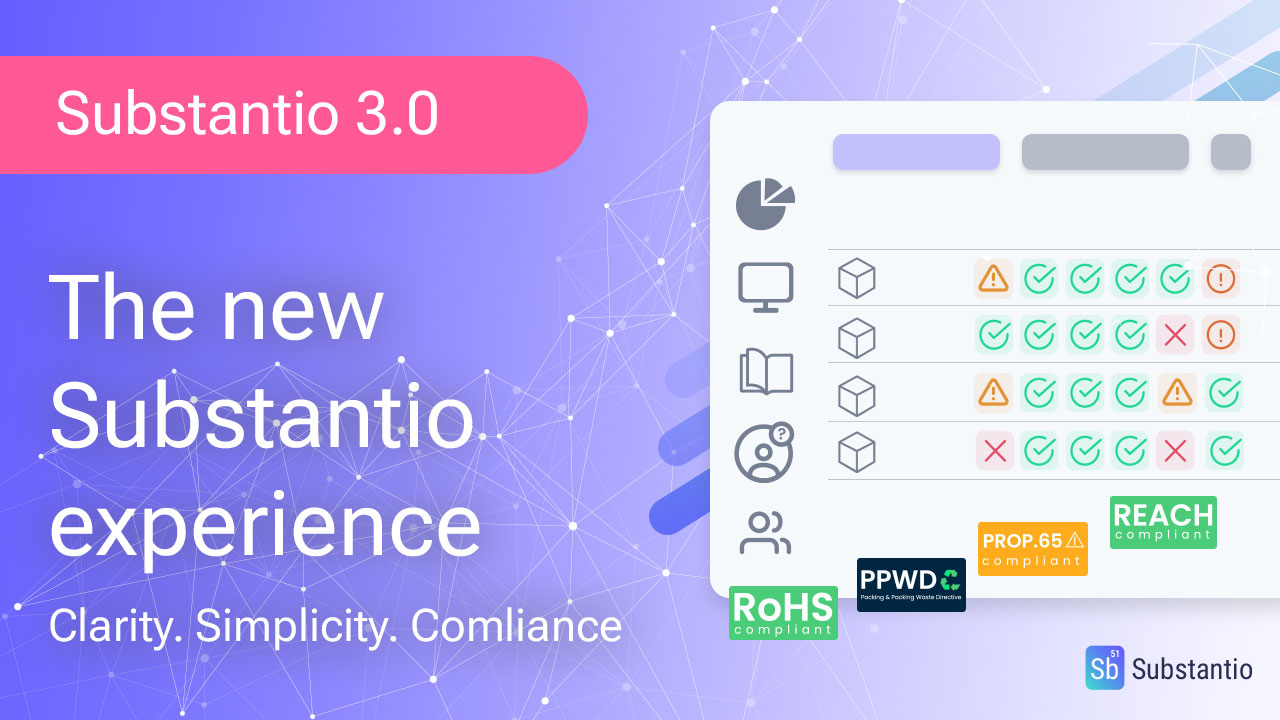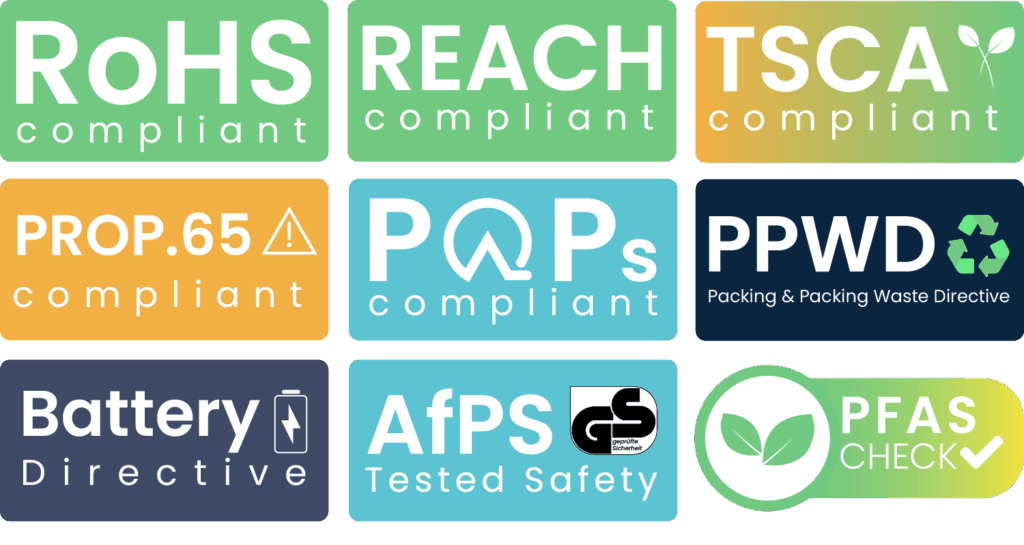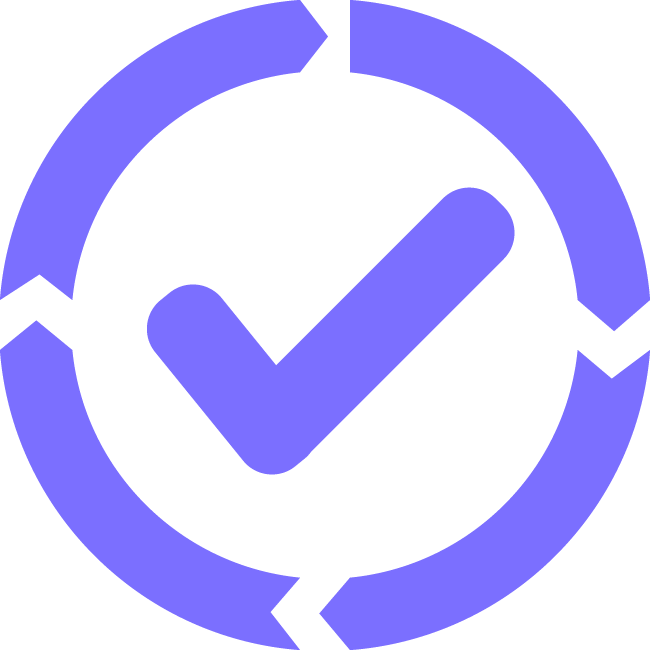Digital Product Passport – Made Simple with Substantio
Are you facing the challenge of providing a Digital Product Passport (DPP) for all your products – and still unsure how to put this into practice?
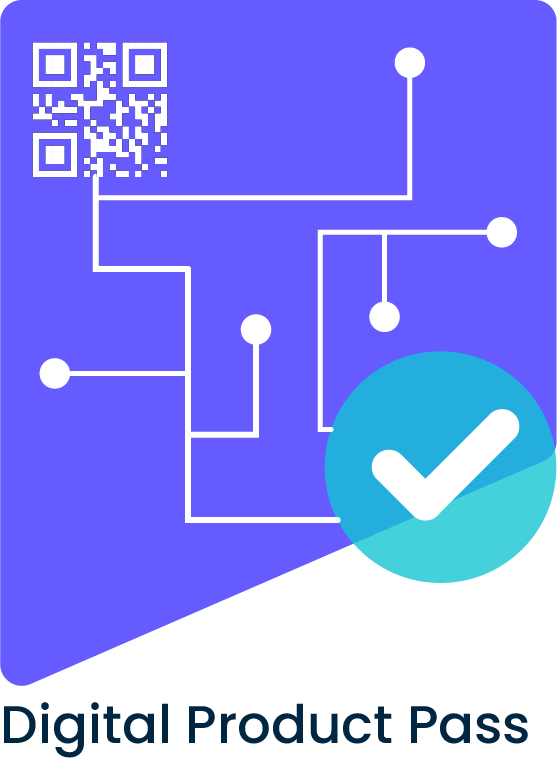
We’re here to help:

Why Substantio Is the Central Software for Your DPPs?
Every company faces the same challenge: DPP data comes from many different sources, changes constantly, and needs to be updated continuously. Substantio is the central DPP portal that automatically collects, validates, and makes all necessary information available.
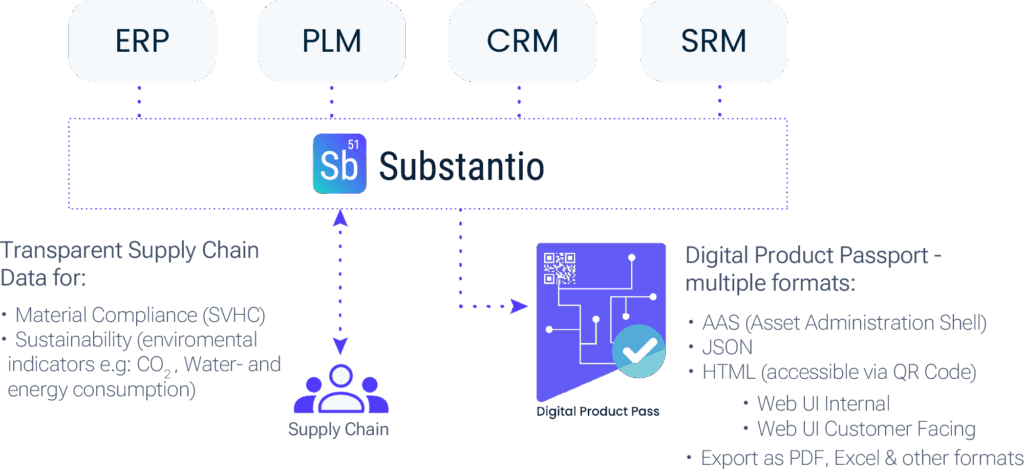
In 4 Steps to the Digital Product Passport with Substantio
Substantio automatically consolidates all existing product, material, and sustainability data from your systems – such as ERP, PLM, PIM, or SRM (Supplier Relationship Management).
Missing information such as CO₂ values, REACH & RoHS data, recycling information, or safety certificates is automatically requested from your suppliers or integrated from databases.
Alle Daten werden in All data is centrally merged, validated, and standardized in Substantio (e.g., AAS format). This creates a digital twin of your product – a complete, current data foundation for the DPP.
With Substantio to the DPP – Your Advantages:
- 100% compliance security (REACH, RoHS, CE, safety certificates)
- Integrated sustainability data (CO2 footprint, recycling, disposal, and more)
- Digitalization boost: Standardized digital twins increase efficiency and ensure significantly higher data quality
- Interoperability with AAS: Digital twins are seamlessly connected to your data sources, enabling system-independent data exchange based on the AAS standard
- Future-proof: Guaranteed EU compliance, legal certainty, and secure market access
For which products and from when will the DPP become mandatory?
Which Information Must the DPP Contain?
A complete Digital Product Passport includes, among others:
Manufacturer information: name, contact, production site
Materials & substances: used materials, regulated substances (e.g., REACH, RoHS)
Sourcing data: supply chain and origin of materials
Sustainability data: Product Carbon Footprint (PCF), energy consumption, environmental impact
Repair & maintenance information: spare part availability, repair instructions
Safety & compliance certificates: e.g., CE marking, technical tests
End-of-life data: recyclability, disposal information, take-back systems
Product documentation: manuals, datasheets
Industry-specific requirements: e.g., battery passport with lifecycle and charging cycle data
The EU DPP Is Coming – Turn Obligation into Opportunity!
With Substantio, you not only ensure product compliance, but also unlock additional advantages for your business:
- Digitalization boost: Streamlined processes with digital twins
- Sustainability: Better traceability of environmental impacts
- Competitive edge: Early implementation secures market position and customer access
- New opportunities: Faster data availability on components & new business models
Start now with Substantio: Create Digital Product Passports automatically and future-proof.
FAQ's

What is the Digital Product Passport?
The Digital Product Passport is a central element of the European Green Deal. Its goal is to create transparency and resource efficiency across the entire life cycle of products, promoting a circular economy and reducing CO₂.
In the future, every product placed on the European market will need a DPP. Manufacturers, suppliers, and distributors are all required to provide and make publicly available comprehensive product data – from production to use and maintenance, through to disposal or reuse.
The exact data requirements will vary depending on the product category. Data is digitally accessible – via QR codes, databases, or portals – helping companies, customers, and authorities to manage products more sustainably.
What challenges does the DPP pose for companies?
Data scattered across different systems
Suppliers delivering information in different formats
Manual data management is time-consuming and error-prone
Without a valid DPP, future EU market access is not possible
Substantio overcomes these challenges by automating data collection, integrating existing systems, and ensuring secure, standardized data exchange.
When will the DPP become mandatory?
When will the Digital Product Passport become mandatory?
From 2026 (Batteries): The DPP becomes mandatory for batteries (under ESPR & the EU Battery Regulation).
From February 18, 2027: All electric and industrial batteries above 2 kWh must have a mandatory Battery Passport (DPP format) available via QR code.
From 2027: Electronics (ICT, consumer electronics) are prioritized in the ESPR Working Plan 2025–2030. A binding start date has not yet been set and will follow with the delegated act – expected with a 12–18 month transition periodafter publication.
2027–2029: Expansion to additional product categories, including electronics, textiles, furniture, tires, iron/steel, aluminum, and chemicals. Rollout will take place step by step, with exact dates defined by delegated acts (again, typically with ~12–18 months transition).
By 2030: The DPP will be mandatory for nearly all physical products on the EU market.
Legal framework & delegated acts:
The basis is Regulation (EU) 2024/1781. Exact requirements per product group will be set by delegated acts, expected by mid-2025 (with ~18 months transition periods).
Source: European Commission Working Plan 2025–2030 for Ecodesign and Sustainable Products.
What is the AAS (Asset Administration Shell)?
The AAS is a standardized format for data exchange. Substantio can generate, import, and process AAS models automatically, enabling interoperable DPP data exchange. The advantage: standardized formats ensure data is always current and prevent outdated information.
Why is a common data exchange standard like AAS necessary?
To make the DPP work, countless data points from different sources and systems need to be combined – from supplier data to compliance and sustainability information.
The AAS ensures:
All supply chain partners use the same “language” for product data
Information can be read, understood, and processed automatically – regardless of ERP, PLM, or compliance systems
Instead of manually parsing PDFs or spreadsheets, DPP data is machine-readable and automated
Substantio supports creating, importing, and exchanging AAS or other models.
How do customers access DPP data in practice?
The DPP can be provided digitally via the central Substantio DPP portal, as a QR code, through websites or webshops, or directly via individual CRM tools.
How do customers access DPP data in practice?
The DPP can be provided digitally via the central Substantio DPP portal, as a QR code, through websites or webshops, or directly via individual CRM tools.

